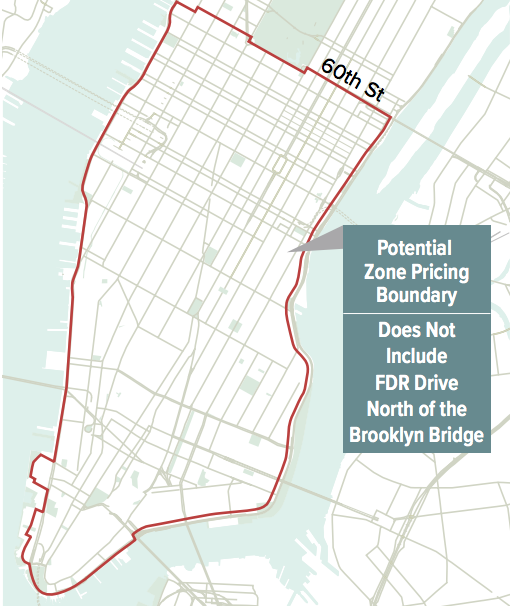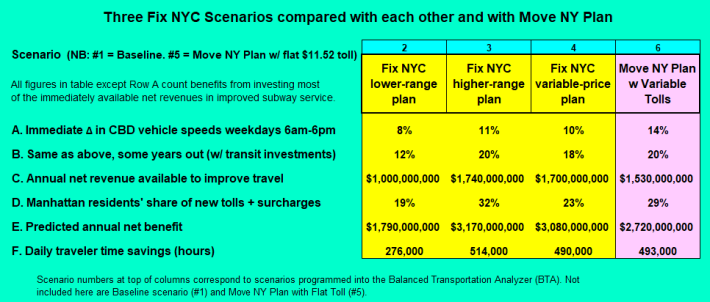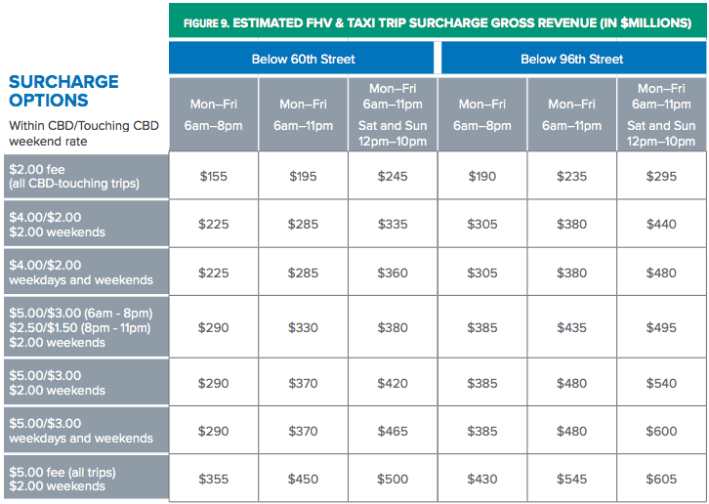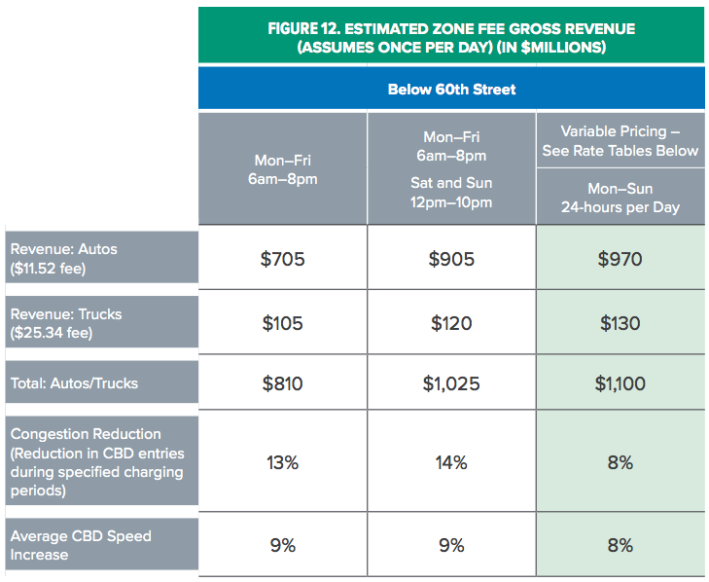I got a pleasant surprise this morning when I punched up a few Fix NYC congestion pricing scenarios into my Balanced Transportation Analyzer spreadsheet: Two of the three toll plans I modeled deliver strong results for traffic reduction and overall social benefits.
The Fix NYC report describes a range of options to price driving into the Manhattan CBD and add a surcharge on for-hire vehicle trips in the most in-demand parts of the city.
My findings suggest that if Governor Cuomo and the legislature choose to aim high on both counts and refuse to carve out exemptions, New York City could end up with traffic reduction and transit funding comparable to those promised by the Move NY toll reform plan.
In two options on the more ambitious end of the Fix NYC scale, traffic would fall about 10 percent initially. Eventually $1.7 billion would be raised each year, once you factor in higher farebox revenues. These results compare well with Move NY, especially in the long run, as revenues are invested to improve subway and bus performance.
What’s more, in the same vein as Move NY, the two ambitious Fix NYC scenarios deliver a fair balance between the revenue raised from Manhattan residents and from residents of the so-called outer boroughs.
Recall that under Move NY, residents of Manhattan would pay 29 percent of all new tolls and surcharges — nearly as much as the 31 percent from Brooklyn and Queens residents combined. That’s due to both toll discounts on MTA bridges and proposed surcharges on for-hire vehicle trips in the Manhattan “taxi zone” (below 110th Street on the West Side and 96th Street on the East Side).
Fix NYC doesn't propose a toll swap, but a similar toll incidence for Manhattan can be achieved with a for-hire vehicle surcharge that goes up to $5 per trip (rates are lower for trips made at off-peak times or that only “touch” the taxi zone rather than staying entirely within it). This has a significant effect on overall revenue generation and the share of revenue coming from Manhattan.
Here's a closer look at the inputs in my scenarios:
- The "lower-range" plan uses a $2 for-hire vehicle fee for all CBD-touching trips (the third column of the first row in the matrix above), and a cordon toll only in effect on weekdays from 6 a.m. to 8 p.m. (the first column in the table below).
- The "higher-range plan" draws from the sixth (final) column and fourth row of the for-hire vehicle matrix and the second column of the cordon toll table.
- The "variable-price plan" draws from the sixth column and seventh (final) row of the for-hire vehicle matrix and the third column of the cordon toll table.
- The Move NY Plan employs variable tolls.
The outcome Cuomo and Albany should strive to avoid is the "lower-range plan," which falls 30-40 percent short of the others in traffic reduction, revenue generation, and overall societal benefit. While it qualifies as a significant improvement to current conditions -- its various benefits net to around $1.8 billion a year -- those are still a long way from the game-changing impacts of Move NY and the two other Fix NYC scenarios I modeled.
One last point: Except for the top data row, all of the figures in the table assume, and take credit for, investing the lion’s share of toll and surcharge revenues into improved subway service — not the spectacularly wasteful (and corrupt) megaprojects, but investments to bring the system back to a “state of good repair” and modernize signals, power supplies, stations, and trains. The resulting service improvements are assumed to “pull” a great many car, cab, and Uber trips into transit, supplementing the “price push” from the congestion charge and significantly augmenting the immediate decrease in traffic congestion.









